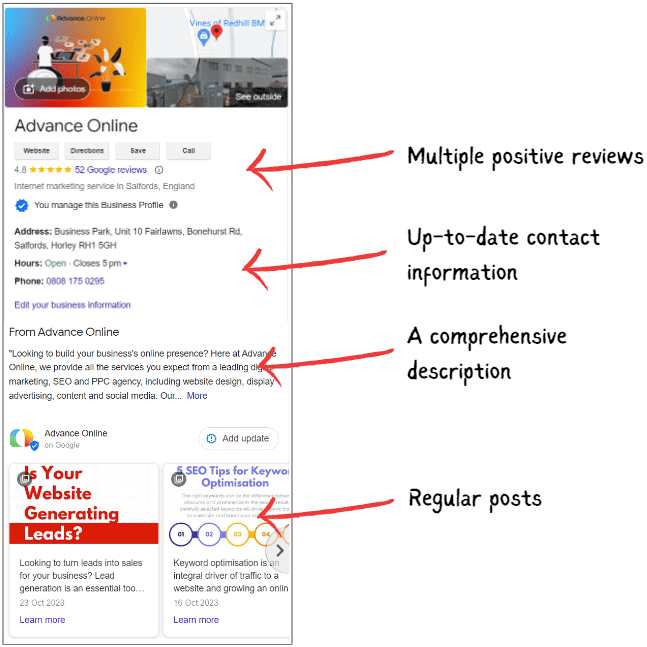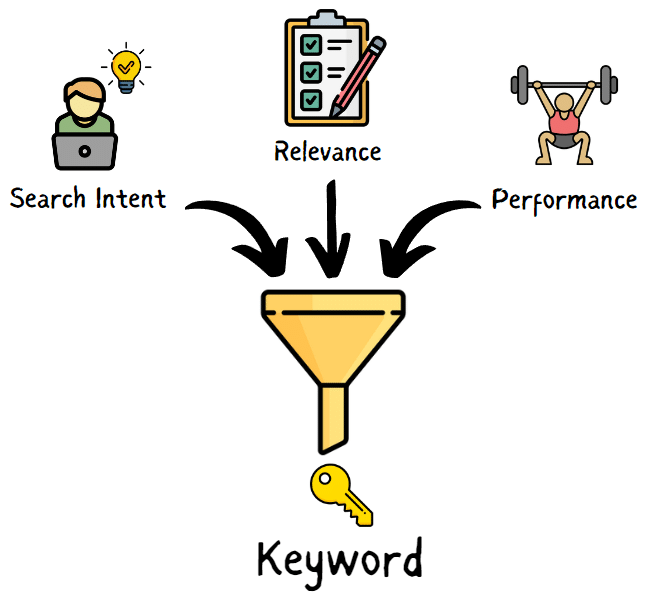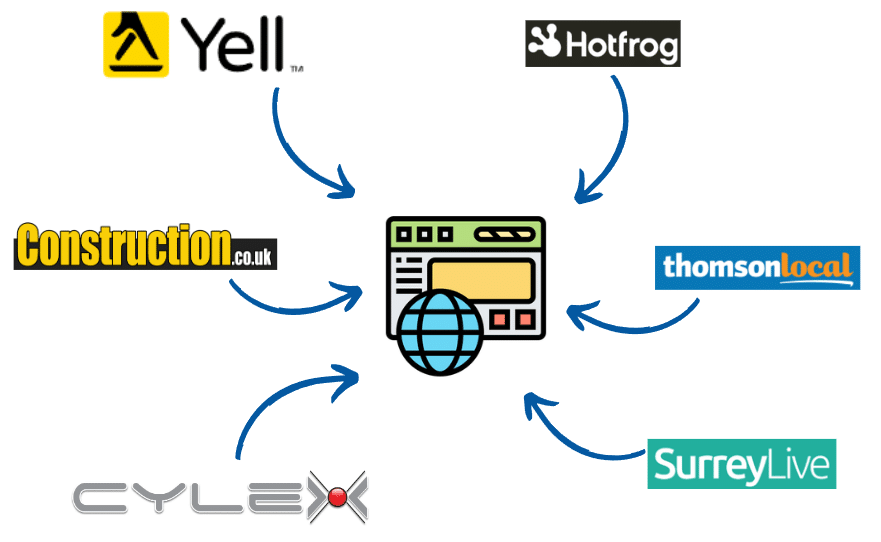
Your Google Business Website is Being Shut Down: What Should You Do
Until now, Google has offered single-page websites powered by the information in a company’s Google Business Profile. From March 2024, Google will take these websites offline.
The to-do list only gets bigger when you’re running a plumbing business. Sending and chasing invoices, arranging apprenticeships, buying parts, renewing licences – and let’s not forget carrying out the dozens of boiler fittings and central heating installations scattered across the region.
One major point on the list that often gets neglected is marketing the business – after all, no accountant or customer is insisting you do it. Also, it’s difficult to know where to start, and when you do, it’s hard to know whether your efforts have been effective or not.
But attracting leads is one of the most important aspects of running and growing a plumbing business (after all, where would a plumber be without a reliable “lead pipeline”?)
At Advance Online, we have years of experience helping plumbers market their businesses to attract more leads and boost revenues.
In this article, we explain how plumbers can market their business and offer eleven tips on digital marketing for plumbers.
Much like with any local business, there are various avenues for plumbers to market their services. From branding to local sponsorship, we explain all.

The brand is the driving force behind marketing a plumbing business. It demonstrates the business’s character and is one of the first things customers encounter. There is no right or wrong answer when it comes to branding a plumbing business, but if you’re finding it difficult to pin down, there are steps you can take to land on the right solution for you – and more importantly, your customer.

Advertising a plumbing business through local channels is nothing new but it’s worth covering all the bases for maximum exposure. The options include:
Another effective way to generate regular leads is to partner with local home associations or builders – that way, you can take advantage of the ‘marketing’ of others. Depending on the relationship, it may involve reciprocal referrals, working at a reduced rate or paying a referral fee.
Finally, don’t forget the power of word of mouth. Keep your customers happy and the leads will generate themselves.
With 98% of consumers searching for local businesses online – and 80% of local searches converting into leads – it’s clear that digital marketing is essential for plumbers. We explain the main types of digital marketing plumbers can – and should – implement.
A website is the central hub of any digital marketing effort. It’s a place for you to promote your business and the services that you offer.
Use an appealing, user-friendly design and engaging copy to encourage customers to get in touch, either by phone, email or contact form. Include case studies and testimonials – this is your chance to shine.
You can build your website using a website builder such as Wix or Squarespace, but for the best results, consider engaging web design professionals.
A website isn’t just a landing page, it’s the basis of your search engine optimisation (SEO) efforts.
SEO involves configuring and optimising a website so that it appears high up in search engine results pages (SERPs) for certain search terms or ‘keywords’. Web pages that appear higher in SERPs receive the largest share of traffic. For example, the top result receives almost 40% of the traffic, while the second and third pages receive only 1% combined.

In simple terms, search engines rank search results in two main ways:
Rankings are also dependent on the technical setup of the website, i.e. how easy it is to access and read for both search engines and users alike.
SEO is the act of optimising websites to best meet all of these criteria.
You may also have heard the term ‘local SEO’, which involves optimising for searches local to your area, either through your website or your Google Business profile.
For more information on SEO, see our Guide to SEO for Local Businesses.
Have you ever noticed that the top search results sometimes have ‘AD’ or ‘Sponsored’ next to them? This is one example of pay-per-click advertising (PPC). Companies enter auctions to appear in the top spots for certain keywords. They pay a fee if a consumer clicks on their website, typically a few pounds.

Another type of PPC is ‘display advertising’. These are the clickable videos, gifs, images and text that appear on other web pages.
The ROI of PPC can easily be calculated by comparing the value of the leads you received vs. the fees paid to the search engine, advertising provider or website. It’s a great way to get immediate marketing results.
Producing informative content and posting it on your website can market your business in several ways.
First, it demonstrates your expertise to prospective customers, building trust.
Second, it’s good for SEO. If a website has published lots of high-quality content on a particular topic, search engines will deem it topical expert – this is called ‘topical authority’ and is a key SEO ranking factor.
Third, it can capture traffic by targeting keywords at different stages of the sales funnel. If a customer is wondering what type of boiler to have next and they find an informative guide on your website via a search engine, you’ve put yourself in prime position to get the job.

Social media is a great way to engage with customers. It’s also a chance to share both your expertise and personality.
Tailoring your approach for each platform is key. For instance, an engaging, playful tone works on Facebook, an inspirational tone is good for Instagram, and a more formal tone is suitable for LinkedIn. And if you’re wondering, ‘Who wants to watch videos of a blocked drain?’, just take a look at some existing social media accounts: there’s an audience for everything.
You can pay to boost social media posts and appear in the feeds of target demographics. Influencer advertising is also possible. If you’ve installed a boiler for a local celebrity, why not ask them to share their satisfaction with their followers?
A step up from flyers through the letterbox, email marketing engages with an already captive audience.
Grow your email list by collecting the details of current and prospective customers and send emails in a targeted manner with, for instance, new deals on boiler installations or early bookings.
However, be careful not to flood inboxes with too many emails, as you may suffer a bout of ‘unsubscribes’.
At times, digital marketing can feel like a tangle of piping in a huge house: it’s difficult to know what works and where things lead. But by following these eleven digital marketing tips for plumbers, you can reach the right audience and generate significant leads.
If you’re only going to carry out one digital marketing activity, make it claiming and optimising your Google Business profile. Simple to create and populate, Google Business profiles appear in both SERPs and on Google Maps. Review functionality makes them an excellent way for consumers to make informed decisions when choosing a service provider.
In search results, Google Business profiles are ranked by their relevance, distance and prominence (in simple terms, the number of positive reviews it has received). To rank highly, make sure your profile has:
Top tip: Solicit reviews from your customers by giving them business cards with QR codes linked to your Google Business profile.

A keyword is a word or phrase for which you would like to rank in search engines. It can be a single word, such as ‘plumber’, or a short phrase, such as ‘emergency plumber in Guildford’.
Deciding which keywords to target is the most essential step of your digital strategy. They not only determine the content of your website for SEO purposes but also the approach you will take in other digital marketing disciplines, such as PPC and social media.
The keywords you choose should:

Keywords for plumbing businesses are typically local and comprise two parts: the service and the location. If you are targeting five services across three locations, that’s a total of fifteen keywords.
Typical service keywords for plumbers include ‘plumbers’, ‘plumbing’, ‘plumbing contractors’, ‘emergency plumbers’, ‘boiler installations’, ‘boiler maintenance’, ‘blocked drains’, ‘drain surveys’ and ‘commercial plumbers’.
For a full list of plumbing keywords with data, see our blog post on the Best Keywords for Plumbers, and for more information on how to select keywords, see our guide on SEO Keywords for Local Businesses.
For plumbers, it’s essential to consider the following when designing a website:
If you’re uncertain about web design and building, reach out to a web-design agency to get help from the specialists.
Appropriate keyword mapping is essential to SEO. For the best results, each service keyword should have a dedicated ‘service page’ and be attached to a maximum of two areas. Any other areas should be targeted on an ‘area page’.
If you are targeting plumber, boiler installations and drain unblocking in three areas: Guildford, Basingstoke and Chobham, then the page layout might look something like the below.

Additional pages providing accreditations, case studies and contact information help improve the depth and quality of the content on the site.
In SEO terms, the first step towards your website reaching the top of the SERPs is on-page optimisation. This involves optimising the content on the website to make it easy to understand for search engines and users alike. On-page optimisation includes, but is not limited to:

An SEO professional can help audit and improve your website – don’t be afraid to ask the experts.
Technical SEO involves configuring the website to make it easy for search engines to read and to provide a user-friendly experience. Typical tasks involve:

Adding your website to the appropriate tools is essential for its ongoing health and provides opportunity to monitor performance. At a minimum, ensure your website is active on Google Search Console and Google Analytics.
Technical SEO can be a daunting affair, especially as poor technical implementation can seriously hamper rankings. Luckily, there are many technical SEO experts on hand to help.

The final piece in the SEO puzzle – improving off-page SEO comes in two forms:
The most important factor is ensuring the citations and backlinks are of a high quality – this means they are relevant to your business and keywords and that websites are not filled with spam.
For a list of high quality business directories, see our article ‘The 20 Best Business Directories for SEO in the UK‘

Pay-per-click advertising offers immediate, tangible results with a measurable ROI, but starting out can be intimidating. With some keywords costing several pounds per click, budget can quickly vanish if you don’t get it right.
To test the waters and mitigate financial risk, try starting small and growing your PPC – that means limiting your budget, choosing possibly one channel (e.g. Google search ads) and targeting a handful of keywords of limited reach. These might be ‘plumber’ in your local area or a more niche service, such as ‘boiler maintenance’, in a wider catchment area.
By understanding the spend and ROI for a small campaign, you can more confidently approach broader campaigns later.
Other points of note for PPC include:
If you still don’t know where to start, try contacting a PPC specialist who can help you determine your strategy and budget.

Try producing content that genuinely helps both you and your customers. Are you fielding calls with basic plumbing questions that don’t warrant a callout? Publish a blog you can direct customers towards. Do you need to learn about new plumbing regulations, such as heat pumps? Collect your learnings in a blog post for both you and your customers.
By approaching content writing in a spirit of genuine helpfulness, you not only demonstrate your worth to prospective customers, but you take a big step forward towards capturing more traffic.
Informative plumbing videos explaining how to, for example, reset a boiler can attract thousands of views, and there’s no shortage of curiosity regarding the everyday aspects of trade jobs.
Well-edited videos showing the satisfying resolution of a plumbing problem, such as replacing legacy piping, are in vogue. And if you find yourself dislodging a particularly gruesome fatberg, make sure to document it. You might be surprised by the attention it gets on social media.

The key is to bring your social media presence in line with your branding and to give it a personal touch by featuring your voiceover or image. Intersperse fun posts with examples of work you’ve completed. Post regularly and persevere through the initial stages, when uptake will inevitably be low.
Some good examples of plumbing social media accounts include Leggy the Plumber on Instagram and George the Plumber on TikTok
Building an email list is no mean feat, but when successful, it offers an excellent avenue to reach engaged customers directly. A multi-pronged approach will help you build your email list quickly. Consider the following tactics:
Once you’ve built an email list, don’t waste it – before you press send, ask yourself if it meets any of the following criteria.
If your email doesn’t achieve at least one (or better two) of the above, you might want to hold fire until you’ve got something more useful to share. An unsubscribe is only a click away…
At times, marketing can seem like a bottomless well (or a leaky cistern, if you will). But that doesn’t mean you need to forever pouring money into your marketing campaigns without knowing whether what you’re doing is worth it.
By using your budget wisely in line with reasonable expectations, you can achieve steady, meaningful results.
In digital marketing terms, we typically see the following marketing models for local plumbing businesses.
It’s worth noting that when done correctly, marketing can grow itself. Start small, gain revenue and invest that into more extensive marketing efforts.
Plumbers need to stand out in an increasingly competitive marketing environment.
By combining traditional approaches with a digital marketing strategy that suits your budget and needs, you can attract leads and grow your business.
If you have any further questions about marketing for plumbers, please get in touch, we would love to hear from you.

Until now, Google has offered single-page websites powered by the information in a company’s Google Business Profile. From March 2024, Google will take these websites offline.

A vital consideration for any business with a digital presence, SEO, otherwise known as search engine optimisation, is essential for several reasons, ranging from credibility to visibility.

Combining precise location data and clear business information with live customer feedback, Google Maps has increasingly become a reliable source of information for consumers.

For a local business owner, Search Engine Optimisation (SEO) can be a daunting endeavour, but it’s also essential

A vital consideration for any business with a digital presence, SEO, otherwise known as search engine optimisation, is essential for several reasons, ranging from credibility to visibility.

Any local business owner who has carried out SEO tasks or paid someone else to do the work, has most likely been left wondering how long it will take for their website to rank on Google.
Get notified of the latest blog posts
| Cookie | Duration | Description |
|---|---|---|
| cookielawinfo-checkbox-analytics | 11 months | This cookie is set by GDPR Cookie Consent plugin. The cookie is used to store the user consent for the cookies in the category "Analytics". |
| cookielawinfo-checkbox-functional | 11 months | The cookie is set by GDPR cookie consent to record the user consent for the cookies in the category "Functional". |
| cookielawinfo-checkbox-necessary | 11 months | This cookie is set by GDPR Cookie Consent plugin. The cookies is used to store the user consent for the cookies in the category "Necessary". |
| cookielawinfo-checkbox-others | 11 months | This cookie is set by GDPR Cookie Consent plugin. The cookie is used to store the user consent for the cookies in the category "Other. |
| cookielawinfo-checkbox-performance | 11 months | This cookie is set by GDPR Cookie Consent plugin. The cookie is used to store the user consent for the cookies in the category "Performance". |
| viewed_cookie_policy | 11 months | The cookie is set by the GDPR Cookie Consent plugin and is used to store whether or not user has consented to the use of cookies. It does not store any personal data. |